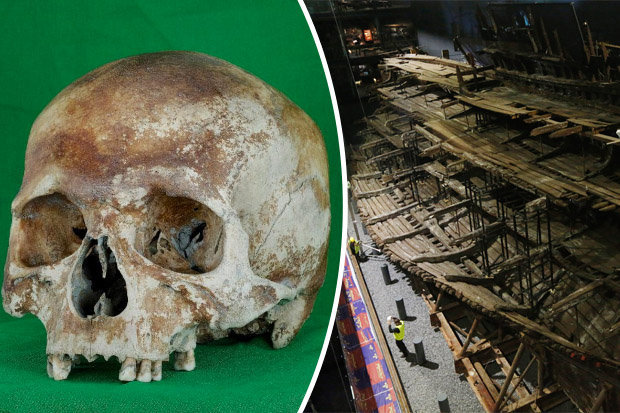-
Tips for becoming a good boxer - November 6, 2020
-
7 expert tips for making your hens night a memorable one - November 6, 2020
-
5 reasons to host your Christmas party on a cruise boat - November 6, 2020
-
What to do when you’re charged with a crime - November 6, 2020
-
Should you get one or multiple dogs? Here’s all you need to know - November 3, 2020
-
A Guide: How to Build Your Very Own Magic Mirror - February 14, 2019
-
Our Top Inspirational Baseball Stars - November 24, 2018
-
Five Tech Tools That Will Help You Turn Your Blog into a Business - November 24, 2018
-
How to Indulge on Vacation without Expanding Your Waist - November 9, 2018
-
5 Strategies for Businesses to Appeal to Today’s Increasingly Mobile-Crazed Customers - November 9, 2018
3D models of artefacts from English King Henry VIII’s warship exhibited online
But it isn’t only academics who are able to explore the virtual skulls: in a separate public section, the carpenter’s skull will be available for everyone to examine, together with similar rotatable, high-resolution 3D images of a selection of the carpenter’s tools and personal items found on board the ship, including his wood-plane and whetstone holder. This risks damage to the delicate pieces and reduces the number of researchers who are able to work on the remains. The goal, the team say, is to assess whether experts can glean as much from such “digital remains” as the real thing: if so, it would allow many more researchers to analyse such finds and draw insights from them – from an individual’s age and sex to the diseases they experienced. “We would like to get more individuals certainly”.
Advertisement
One of those highlighted crew members is the same carpenter whose skull is the centrepiece of the new website. His remains were found on the orlop deck, surrounded by his tools.
“Analysis of the carpenter’s remains reveal he was probably in his mid-to-late thirties, 5’7” and was a strong, muscular man. Carpenters like him worked on the lower decks to fix damage during battle.
However, there is little he could have done to prevent the sinking of his ship because water was taken on through gunports that were left open, rather than through a hole caused by enemy cannon fire.
Dr Alex Hildred, Head of Research and Curator of Human Remains at The Mary Rose Trust, said: “There is more that can be done with the excess bones, but that means touching them all and getting them out of the boxes and it’s a huge undertaking and all the problems with contamination, holding things and breathing on them and breaking them”.
Almost 500 men were on board Henry VIII’s Mary Rose when it went down off the coast of Portsmouth during the Third French War. Water rushed in through the open gunports on that side of the ship, causing the vessel to sink rapidly, killing almost the whole crew of 400 men. Generated from the archaeological surveys, the original extent of the complete ship is shown in outline. The king is said to have watched horror-stricken as it went down.
A digital future for our museums?
Nine other Mary Rose skulls can be viewed by archaeologists, osteologists and forensic anthropologists who will take part in a study into the usefulness of 3D models to the world of science.
The nearly startling level of scrutiny afforded by the new online collection – named Virtual Tudors – allows viewers to examine the artefacts as if one was holding them in their own hands.
The researchers who captured the images of these important historical pieces think that the technology is so useful that many more artefacts will be digitally preserved.
Also found, in the doorway of the Carpenter’s cabin, were the remains of dog (named Hatch by researchers) that would have been in charge of rodent control.
Advertisement
Accessible online to the public, the team hope that the carpenter’s skull and artefacts will capture the imagination of the all who view them.




























